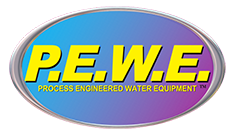 In the realm of waste treatment and disposal, there are many processes that the general public knows next to nothing about. Sludge dewatering is most likely one of those processes. In today’s post, we’ll take a closer look at what this process entails, why it’s so essential, and how it’s typically achieved.
In the realm of waste treatment and disposal, there are many processes that the general public knows next to nothing about. Sludge dewatering is most likely one of those processes. In today’s post, we’ll take a closer look at what this process entails, why it’s so essential, and how it’s typically achieved.
What is Sludge Dewatering?
Essentially, this process involves the separation of sludge (which is a mixture of materials made from a variety of industrial processes, including water treatment, wastewater treatment, or sanitation systems). Sludge needs to be separated into solids and liquids in order to minimize waste and increase efficiency during the disposal process. Sludge dewatering does not involve treatment; it merely separates these two types of components, meaning they each may need to be individually treated in a later stage.
Why is Sludge Dewatering Performed?
To some, sludge dewatering may seem like an unnecessary step. But it’s actually an important one for companies due to disposal costs and sustainability objectives. The moisture left over in solids that have gone through the dewatering process has a direct impact on the costs of disposal. Therefore, as much water needs to be removed as possible prior to sludge disposal. Because sludge dewatering reduces the volume and weight of this sludge material, disposal and transportation costs can be minimized. Not only does this keep costs down, but it also allows for greater compliance with sustainable practices. Businesses are mandated to dispose of sludge in ways that are outlined by regulatory agencies, but they may also have their own mandates for disposal techniques that are considered to be ecologically sound. By prioritizing the sludge dewatering process, businesses can comply with regulations, minimize costs, and achieve eco-friendly goals.
How is Sludge Dewatering Accomplished?
In most cases, a belt filter press may be used to perform sludge dewatering. These belt filter systems allow for increased automation and accuracy. As the sludge passes through the feed hopper, the material is filtered through cloths and belts, as well as rollers. This process subsequently separates the sludge into a filtrate (the liquid component, which typically ends up going through a special drain) and solid cakes, which may then be sorted into a receiving container. Going through this process allows the volume and mass of the solids in the sludge to be condensed, all while ensuring that these steps can be completed efficiently and safely.
According to recent data, up to half of all assets in wastewater treatment facilities may reach beyond the midpoint of their useful lives by the year 2020. That means that there’s no better time to consider replacing your existing equipment with more cutting-edge standalone wastewater treatment systems like these. To learn more about how our belt filter presses can make significant improvements to your sludge dewatering process, please contact us today.


